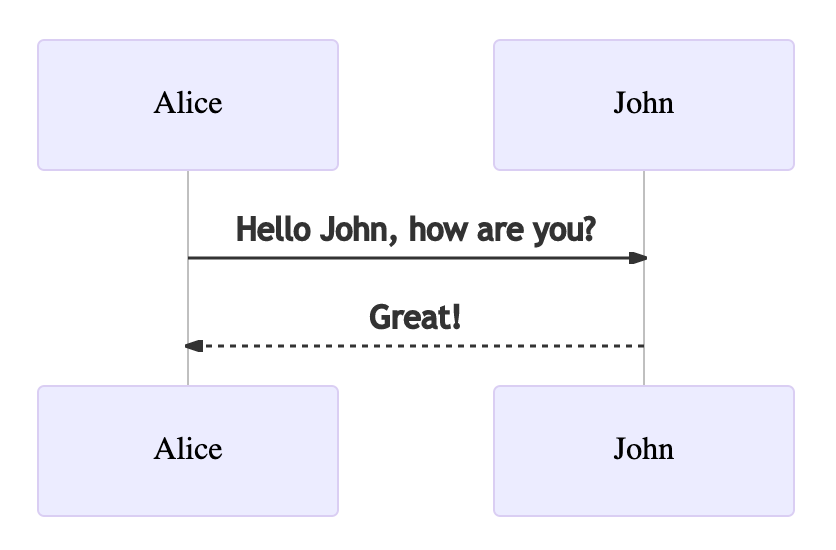Let’s demo some code snippet, with some mermaid diagrams. Because if you put some code in your blog, you would at least make it:
- Searchable
- Good-looking
Search on code
Search should be working even for complicated escape symbols.
sed -i 's/\"hostname\"\:.*$/\"hostname\"\: \"'$IPADDR'\"\,/g' open-falcon/agent/config/cfg.json
Or try searching for partial of a command, like this article should be returned when looking for “find grep”
find /etc -type f -exec cat '{}' \; | tr -c '.[:digit:]' '\n' | grep '^[^.][^.]*\.[^.][^.]*\.[^.][^.]*\.[^.][^.]*$'
Code highlighting examples
Because you might put code in your blog post, and you want to make sure it will look good in here. Plus that the search function will still be working!
Java
java example
import java.util.*;
@Example
public class Demo {
private static final String CONSTANT = "String";
private Object o;
/**
* Creates a new demo.
* @param o The object to demonstrate.
*/
public Demo(Object o) {
this.o = o !== null ? o : new Object();
String s = CONSTANT + "Other example of text";
int i = 123 - 33 % 11;
}
public static void main(String[] args) {
Demo demo = new Demo();
System.out.println(demo.o.toString())
}
}
Javascript
/**
* Does a thing
*/
function helloWorld(param1, param2) {
const example = `hello ${param1}`
var something = {
key: "value",
number: 1
};
// Do something
if (2.0 % 2 == something) {
console.log('Hello, world!');
} else {
return null;
}
// TODO comment
}
JSON
{
"animals": {
"tiger": {
"name": "tiger",
"images": ["🐯", "🐅", "⻁"]
},
"turtle": {
"age": 126,
"image": "🐢"
},
"unicorn": {
"doesExist": true,
"image": "🦄"
}
}
}
Python
import os
def some_function(param_one="", param_two=0):
r'''A docstring'''
if param_one > param_two: # interesting
print("Greater")
return (param_two - param_one + 1 + 0b10) or None
class SomeClass:
""" dunno what I am doing """
def __init__(self):
pass
YAML
You can also render some yaml, like this _config.yml:
# Welcome to Jekyll!
#
# This config file is meant for settings that affect your whole blog, values
# which you are expected to set up once and rarely edit after that. If you find
# yourself editing this file very often, consider using Jekyll's data files
# feature for the data you need to update frequently.
#
# This file, "_config.yml" is *NOT* reloaded automatically when you use
# 'bundle exec jekyll serve'. If you change this file, please restart the server process.
# Site settings
# These are used to personalize your new site. If you look in the HTML files,
# you will see them accessed via Intelli-cell, , and so on.
# You can create any custom variable you would like, and they will be accessible
# in the templates via .
# SITE CONFIGURATION
baseurl: "/Type-on-Strap"
url: "https://sylhare.github.io"
# THEME-SPECIFIC CONFIGURATION
title: Type on Strap # site's title
description: "A website with blog posts and pages" # used by search engines
avatar: assets/img/triangle.png # Empty for no avatar in navbar
favicon: assets/favicon.ico # Icon displayed in the tab
remote_theme: sylhare/Type-on-Strap # If using as a remote_theme in github
Mermaid
Diagrams with mermaid, make sure it is enabled in the _config.yml.
Here is a simple example:
<!-- To generate a diagram -->
<div class="mermaid">
sequenceDiagram
Alice->>John: Hello John, how are you?
John-->>Alice: Great!
</div>
That will be rendered into this:

You can also go with more complex features and diagrams from the documentation:
